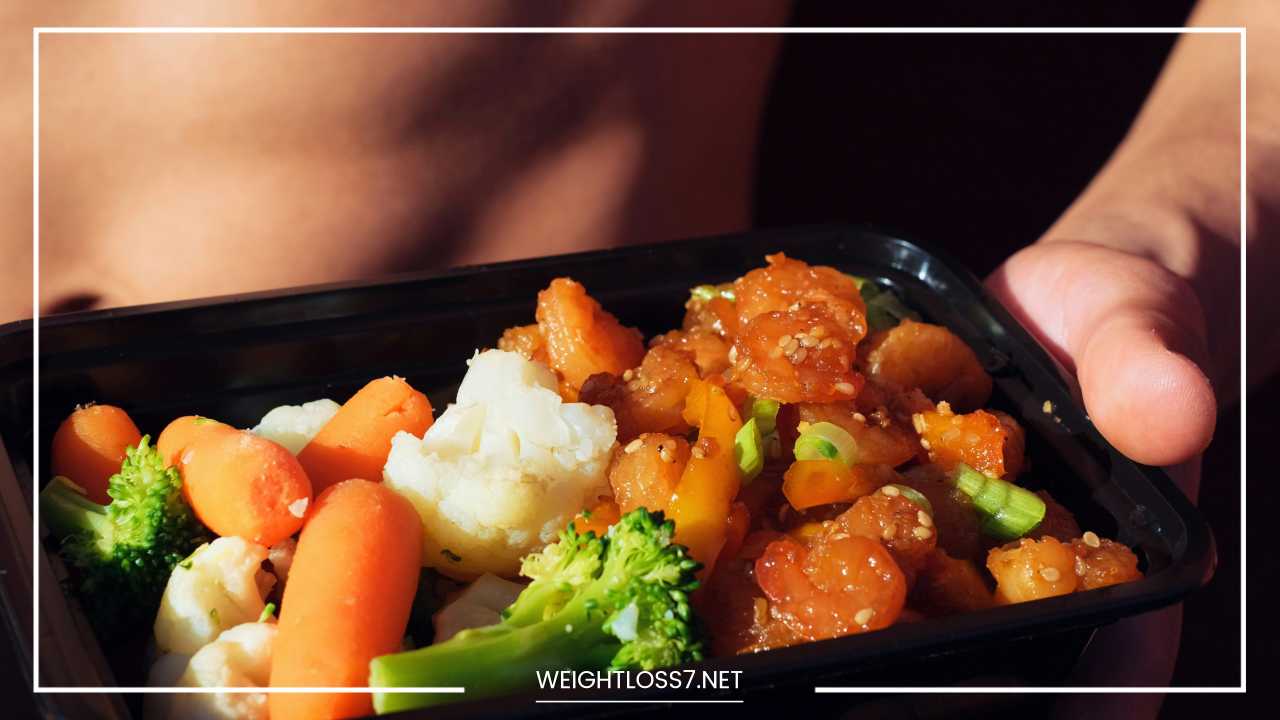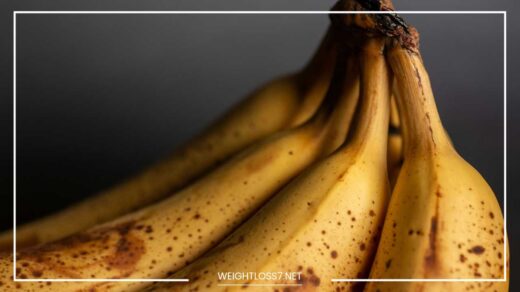How Can I Lose Weight Fast

Lose Weight Fast
Shedding Pounds Safely: A Comprehensive Guide to Sustainable Weight Loss
Crash diets and fad workouts might entice you with promises of rapid weight loss, but often leave you feeling deprived, frustrated, and worse off than before. The truth is, healthy and sustainable weight loss is a marathon, not a sprint.
This blog post will be your comprehensive guide, navigating you through effective strategies to reach your weight loss goals, while prioritizing your well-being and overall health.
Understanding Your Weight Loss Journey: The Science Behind Calories
Our bodies function like complex calorie-burning machines. Calories from the food we consume fuel our daily activities.
To lose weight, you need to create a calorie deficit – burning more calories than you take in. This can be achieved through a combination of a healthy eating plan and regular exercise. But it’s not a simple equation. Several factors influence your body’s calorie needs and burning rate, including:
- Basal Metabolic Rate (BMR): This is the number of calories your body burns at rest to maintain essential functions like breathing, circulation, and cell repair. BMR is influenced by factors like age, gender, muscle mass, and genetics.
- Thermic Effect of Food (TEF): The energy your body expends digesting, absorbing, and storing the food you consume. Protein has a higher TEF compared to carbohydrates and fats.
- Non-Exercise Activity Thermogenesis (NEAT): The calories you burn through daily activities besides planned exercise, such as fidgeting, walking around the house, and even cleaning.
- Exercise Activity Thermogenesis (EAT): The calories you burn during physical activity.
Understanding these factors can help you create a personalized calorie deficit for sustainable weight loss. Consulting a registered dietitian or using online calculators that factor in your BMR, activity level, and weight loss goals can be helpful starting points.
Building a Balanced Plate: The Power of Real, Unprocessed Food
Ditch the restrictive diets that leave you feeling hungry and irritable! Focus on creating a balanced eating plan rich in whole, unprocessed foods. Here are some key principles to guide you:
- Make Whole Grains Your Foundation: Swap refined carbohydrates like white bread, pasta, and sugary cereals for whole-wheat options like brown rice, quinoa, and whole-grain bread. Whole grains provide sustained energy, keep you feeling fuller for longer, and are packed with essential nutrients like fiber, B vitamins, and minerals.
- Embrace the Rainbow on Your Plate: Fill half your plate with a variety of colorful fruits and vegetables. These powerhouses are low in calories and dense in vitamins, minerals, antioxidants, and fiber. Aim for a diverse mix of fruits and vegetables throughout the week to maximize nutrient intake.
- Choose Lean Protein Sources: Include lean protein sources like chicken, fish, beans, lentils, and tofu in your meals. Protein is essential for building and maintaining muscle mass, which helps boost your metabolism and keeps you feeling satisfied.
- Don’t Fear Healthy Fats: Contrary to popular belief, healthy fats are not the enemy. Include healthy fats from sources like avocados, nuts, seeds, and olive oil in your diet. They promote satiety, support nutrient absorption, and contribute to healthy cell function.
- Limit Sugary Drinks and Processed Foods: Sugary drinks like sodas, juices, and commercially prepared coffee drinks are loaded with empty calories and can contribute to weight gain. Processed foods are often high in unhealthy fats, sodium, added sugars, and refined carbohydrates. Opt for water, unsweetened tea, and homemade meals whenever possible.
- Mindful Portion Control is Key: Pay attention to portion sizes. Use smaller plates, which can help you consume less without feeling deprived. Learn about proper portion sizes for different food groups. There are many helpful online resources and visuals to guide you.
Making Exercise Your Ally: Moving Your Body for Lasting Change
Exercise plays a crucial role not only in weight loss but also in overall health and well-being. Here’s how to incorporate movement into your routine in a way that feels good and is sustainable:
- Find Activities You Enjoy: The key to sticking with an exercise program is to find activities you genuinely enjoy. Do you love dancing? Take a Zumba class! Are you an outdoor enthusiast? Explore hiking or biking trails. Explore different options until you find something that sparks joy and keeps you motivated.
- Start Gradually and Build Consistency: Don’t overwhelm yourself with intense workouts you haven’t built up to. Begin with moderate-intensity exercise for 30 minutes most days of the week, and gradually increase duration and intensity as your fitness level improves. Consistency is key – aim for at least 150 minutes of moderate-intensity exercise or 75 minutes of vigorous-intensity exercise per week.
- Strength Training is Your Metabolism Booster: Don’t neglect strength training. Building muscle mass helps boost your metabolism, even at rest, leading to more calorie burning throughout the day. Strength training exercises can be done with bodyweight exercises like squats, lunges, push-ups, and planks, or by using free weights, resistance bands, or weight machines. Aim for strength training exercises that target all major muscle groups at least twice a week.
The Power of Your Mind: Cultivating Habits for Sustainable Weight Loss
Sustainable weight loss goes beyond just food and exercise. It’s about cultivating healthy habits and creating a positive relationship with food and movement. Here are some additional tips to support your weight loss journey:
- Practice Mindful Eating: Slow down and savor your food. Eat without distractions like phones or TV. Pay attention to your body’s hunger and fullness cues. Stop eating when you’re comfortably full, not stuffed.
- Stay Hydrated: Drinking plenty of water keeps you feeling full, flushes out toxins, and aids in digestion. Aim for eight glasses of water daily. Consider incorporating herbal teas or adding slices of lemon, cucumber, or berries to your water for extra flavor.
- Get Enough Sleep: When sleep-deprived, your body produces more ghrelin (the hunger hormone) and less leptin (the satiety hormone), leading to increased cravings and difficulty regulating appetite. Aim for 7-8 hours of quality sleep each night. Develop a relaxing bedtime routine to wind down and prepare for restful sleep.
- Manage Stress: Chronic stress can lead to unhealthy eating habits and cortisol spikes, a stress hormone that can contribute to weight gain. Find healthy ways to manage stress, such as yoga, meditation, deep breathing exercises, spending time in nature, or listening to calming music.
- Find a Support System: Surround yourself with supportive people who encourage your weight loss goals. Consider joining a weight loss support group, working out with a friend, or having an accountability partner.
- Celebrate Non-Scale Victories: Weight loss isn’t just about the numbers on the scale. Celebrate your non-scale victories – increased energy levels, improved mood, better sleep, fitting into your favorite clothes, and feeling stronger.
Building a Sustainable Lifestyle: Beyond Weight Loss
Remember, sustainable weight loss isn’t just about shedding pounds; it’s about adopting a healthy lifestyle that promotes overall well-being. Here are some additional tips to make healthy changes that last:
- Meal Prep is Your Friend: Planning and prepping your meals in advance helps you make healthy choices, saves time, and avoids unhealthy temptations when you’re short on time. Dedicate some time each week to prepping healthy snacks and lunches.
- Become Label Savvy: When choosing packaged foods, pay attention to serving sizes and calorie content. Look for foods that are lower in added sugars, unhealthy fats, and sodium.
- Cook More at Home: Cooking at home allows you to control the ingredients and portion sizes of your meals. Experiment with new recipes that incorporate healthy ingredients.
- Find Healthy Alternatives: Satisfy cravings with healthy options. For example, swap sugary snacks for fruit with a dollop of nut butter, choose air-popped popcorn instead of potato chips, or make a smoothie with Greek yogurt, fruit, and spinach for a satisfying and nutritious treat.
Embrace the Journey: Challenges and Overcoming Setbacks
Weight loss is a journey, with setbacks and plateaus along the way. Don’t get discouraged! Here’s how to navigate challenges and stay motivated:
- Expect Setbacks: Everyone experiences setbacks. The key is not to let them derail your progress. If you overindulge one day, get back on track with your healthy eating plan at the next meal. Don’t let one misstep turn into a full-blown relapse.
- Focus on Progress, Not Perfection: Aim for progress, not perfection. There will be days when you might not be as active or make the healthiest choices. That’s okay! The important thing is to keep moving in the right direction most of the time.
- Reframe Your Mindset: Shift your focus from weight loss to healthy living. Focus on how good you feel when you make healthy choices and move your body. Celebrate the positive changes you’re making for your health and well-being.
- Seek Professional Help: If you’re struggling to lose weight or have underlying health conditions, consult a registered dietitian, healthcare professional, or certified personal trainer. They can provide personalized guidance and support to help you reach your goals.
- Embrace the Power of Patience: Sustainable weight loss takes time and dedication. Don’t get discouraged if you don’t see results overnight. Celebrate your progress, no matter how small, and trust that consistent effort will lead to lasting change.
Final Word: Building a Healthier, Happier You
Sustainable weight loss is an investment in yourself. By making gradual changes to your diet, exercise routine, and daily habits, you can achieve lasting weight loss, improve your overall health, and feel your best. Remember, this is a journey, not a destination

















